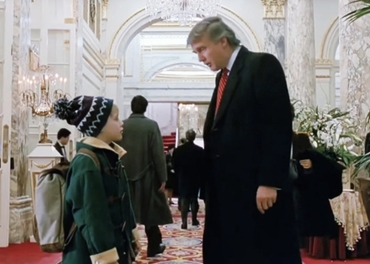Welcome to Part Five of our current Tale for Our Time: George Orwell's classic portrait of a society obsessed by thoughtcrime and wrongthink - Nineteen Eighty-Four. Lynn Foster, a First Day Founding Member of The Mark Steyn Club from Ontario, writes:
I am onto Part Three tonight but the first two episodes have terrified me...am I the only one who sees we are now living this...!!!...I feel like I am losing my mind as this story unfolds like today's headlines...
We have allowed 1984 to be 2021...God Save Us All.
Indeed, Lynn. And it turns out that a panopticon state micro-policing every individual's most piffling aside is incredibly popular, at least with the celebs and the media and the artists and our other societal "influencers".
In tonight's episode George Orwell invents the "memory hole":
In the walls of the cubicle there were three orifices. To the right of the speakwrite, a small pneumatic tube for written messages, to the left, a larger one for newspapers; and in the side wall, within easy reach of Winston's arm, a large oblong slit protected by a wire grating. This last was for the disposal of waste paper. Similar slits existed in thousands or tens of thousands throughout the building, not only in every room but at short intervals in every corridor. For some reason they were nicknamed memory holes. When one knew that any document was due for destruction, or even when one saw a scrap of waste paper lying about, it was an automatic action to lift the flap of the nearest memory hole and drop it in, whereupon it would be whirled away on a current of warm air to the enormous furnaces which were hidden somewhere in the recesses of the building.
Winston examined the four slips of paper which he had unrolled. Each contained a message of only one or two lines, in the abbreviated jargon--not actually Newspeak, but consisting largely of Newspeak words--which was used in the Ministry for internal purposes...
Winston dialled 'back numbers' on the telescreen and called for the appropriate issues of 'The Times', which slid out of the pneumatic tube after only a few minutes' delay. The messages he had received referred to articles or news items which for one reason or another it was thought necessary to alter, or, as the official phrase had it, to rectify.
The "memory hole" is related to earlier concepts such as damnatio memoriae - the "condemnation of memory". But in those less technological days rubbing the name of a discredited general off a memorial at least draws attention to the man who isn't there and raises the question of why he isn't there. Orwell's memory hole is more total: The man was never there.
Today the "rectification" of the past proceeds apace, unto the most trifling detail. Once upon a time there was a blockbuster movie called Home Alone 2: Lost in New York. In the course of the film, the young protagonist winds up at the Plaza Hotel. At that time the Plaza was owned by a man called Donald J Trump (one of the least worst owners of the Plaza in recent years, in my opinion). So it would not be unusual for the child star to run into Mr Trump in the lobby of his own hotel.
Three decades on, the child star in question, Macaulay Culkin, has joined the worldwide chorus demanding that his scene with Trump be excised from the film. For a quarter-century, it was a cute and popular cameo appearance. But now that reality has to be "rectified".
Members of The Mark Steyn Club can hear Part Five of our adventure simply by clicking here and logging-in. Earlier episodes of Nineteen Eighty-Four can be found here, and previous Tales for Our Time here.
If you'd like to join us in The Mark Steyn Club, we'd love to have you: please see here. And, if you've a chum who enjoys classic fiction, we've introduced a special Steyn Gift Membership: you'll find more details here. Oh, and we also do video poetry.
Please join me back here tomorrow evening for Part Six of Nineteen Eighty-Four.

